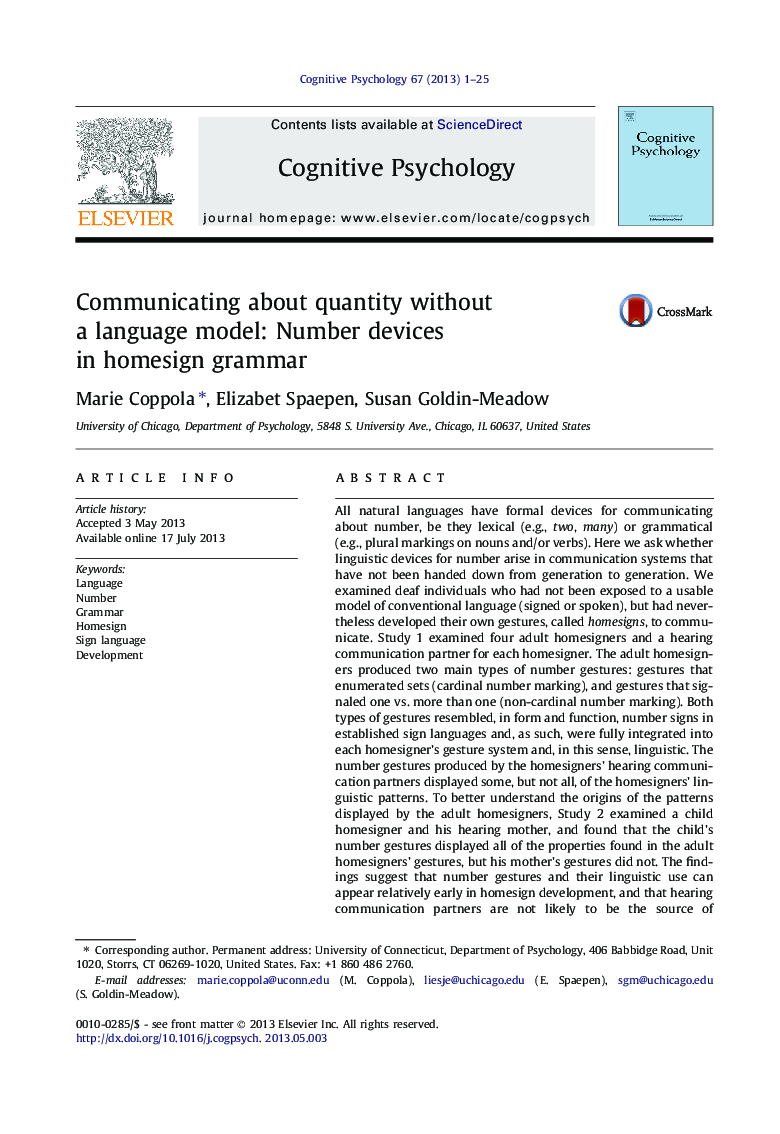| کد مقاله | کد نشریه | سال انتشار | مقاله انگلیسی | نسخه تمام متن |
|---|---|---|---|---|
| 916887 | 1473397 | 2013 | 25 صفحه PDF | دانلود رایگان |

• Homesigners’ number gestures enumerated sets, and also signaled 1 vs. more than 1.
• Number devices were linguistically integrated into each homesigner’s gesture system.
• Homesigners’ number gestures resemble number expressions in established sign languages.
• Hearing interlocutors are unlikely to be the source of homesigners’ number devices.
• Linguistic number devices can arise in the absence of conventional language input.
All natural languages have formal devices for communicating about number, be they lexical (e.g., two, many) or grammatical (e.g., plural markings on nouns and/or verbs). Here we ask whether linguistic devices for number arise in communication systems that have not been handed down from generation to generation. We examined deaf individuals who had not been exposed to a usable model of conventional language (signed or spoken), but had nevertheless developed their own gestures, called homesigns, to communicate. Study 1 examined four adult homesigners and a hearing communication partner for each homesigner. The adult homesigners produced two main types of number gestures: gestures that enumerated sets (cardinal number marking), and gestures that signaled one vs. more than one (non-cardinal number marking). Both types of gestures resembled, in form and function, number signs in established sign languages and, as such, were fully integrated into each homesigner’s gesture system and, in this sense, linguistic. The number gestures produced by the homesigners’ hearing communication partners displayed some, but not all, of the homesigners’ linguistic patterns. To better understand the origins of the patterns displayed by the adult homesigners, Study 2 examined a child homesigner and his hearing mother, and found that the child’s number gestures displayed all of the properties found in the adult homesigners’ gestures, but his mother’s gestures did not. The findings suggest that number gestures and their linguistic use can appear relatively early in homesign development, and that hearing communication partners are not likely to be the source of homesigners’ linguistic expressions of non-cardinal number. Linguistic devices for number thus appear to be so fundamental to language that they can arise in the absence of conventional linguistic input.
Journal: Cognitive Psychology - Volume 67, Issues 1–2, August–September 2013, Pages 1–25